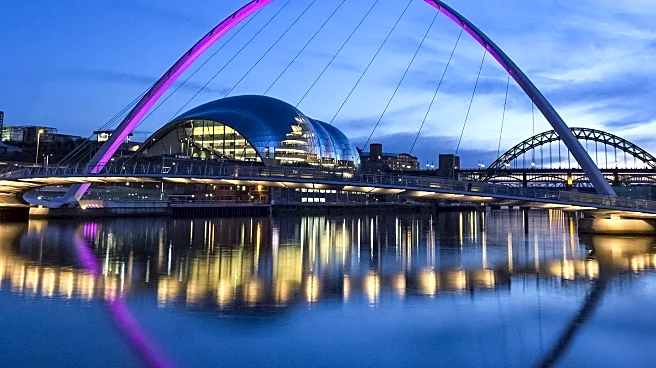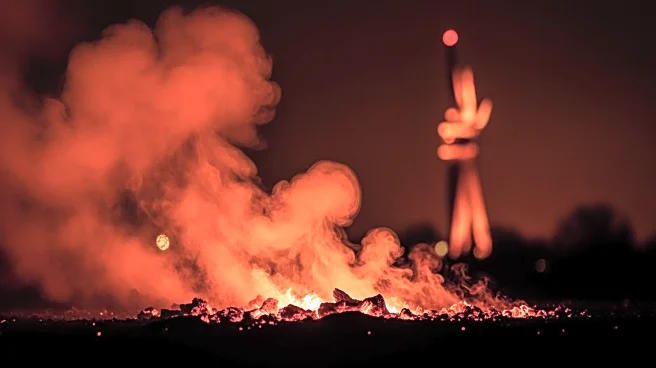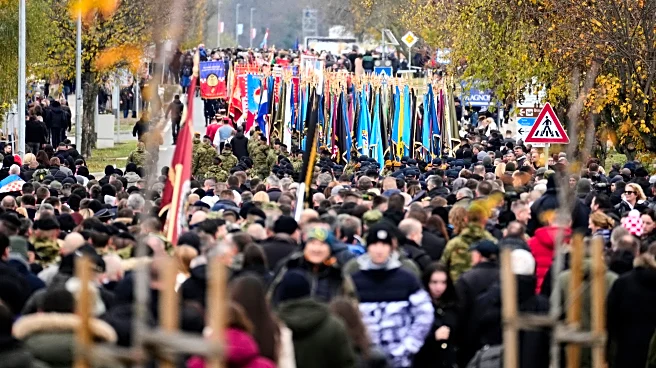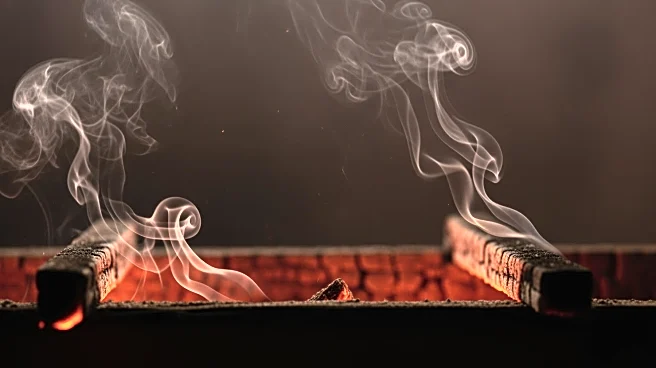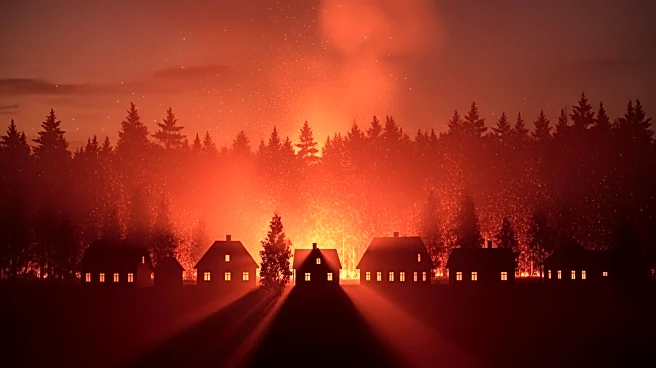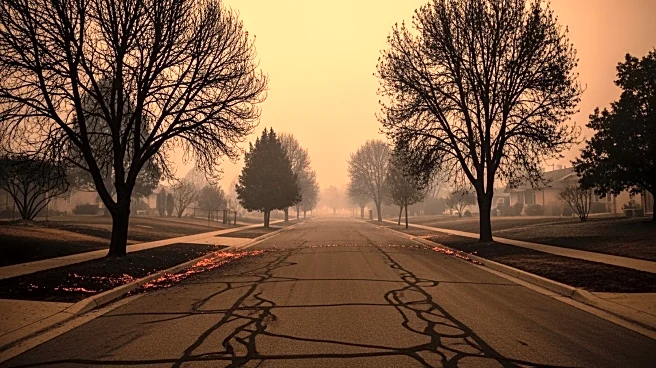What's Happening?
A significant fire erupted in a landmark skyscraper in Zagreb, the capital of Croatia, causing extensive damage to the building known as the Vjesnik tower. The fire began near the top of the 16-floor structure and rapidly spread downward, making it difficult
for approximately 100 firefighters to enter and combat the blaze. The building was largely unoccupied at the time of the incident, which occurred around midnight on Monday. By midday Tuesday, the fire was reportedly extinguished, although the structure continued to smolder. The mayor of Zagreb, Tomislav Tomasevic, expressed optimism that the state and other owners would initiate renovation efforts soon, despite the total damage observed.
Why It's Important?
The destruction of the Vjesnik tower, a prominent feature in Zagreb's skyline, represents a significant loss for the city both culturally and economically. The tower, once home to a popular newspaper, holds historical significance and its loss may impact local heritage preservation efforts. The incident underscores the importance of fire safety measures in urban planning and the challenges faced by emergency services in handling large-scale fires in high-rise buildings. The event may prompt a review of safety protocols and infrastructure resilience in Zagreb and potentially influence similar assessments in other cities.
What's Next?
Following the fire, the focus will likely shift to assessing the structural integrity of the remaining parts of the building and planning for its reconstruction. Local authorities and building owners are expected to collaborate on renovation plans, which may involve modernizing the structure to prevent future incidents. The event may also lead to increased scrutiny of fire safety standards in other high-rise buildings across Croatia, potentially resulting in policy changes or new regulations to enhance public safety.
Beyond the Headlines
The fire at the Vjesnik tower highlights broader issues related to urban development and emergency preparedness. It raises questions about the adequacy of current fire safety measures in older buildings and the need for modernization to meet contemporary standards. Additionally, the incident may influence public discourse on the preservation of historical sites versus the need for modern infrastructure, balancing cultural heritage with safety and functionality.




